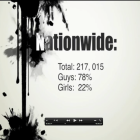
‘Models for Change’ Series Available Online
|
A series of eight reports that summarize effective strategies to improve services and treatment of juveniles in the justice system is now available through the Models for Change Research Initiative website. At a time of tight federal, state and local budgets, the aim of the “Knowledge Briefs” series is to share pioneering strategies that communities can study and possibly duplicate within their own juvenile systems. Supported by the John D. and Catherine T. MacArthur Foundation, which has spent some $100 million on juvenile justice reform efforts since 2004, the series outlines inventive approaches adopted by different states to cost-effectively improve the outlook for young people leaving the justice system and re-entering society. The series includes a study that examined whether young people at three sites in Louisiana and Washington state were treated differently in probation if they belonged to a minority race or ethnic group, and a cost-benefit analysis from a juvenile center in Cook County, Ill., that could serve as an example of how to determine whether certain reforms are worth the money. Although the reports were published last December, the MacArthur Foundation announced their release as a series a couple of weeks ago, and the Office of Juvenile Justice and Delinquency Prevention within the U.S. Department of Justice promoted their availability in an email to its news subscribers yesterday. In January, the OJJDP announced a $2 million partnership with the MacArthur Foundation to support key reforms in the juvenile justice system.







